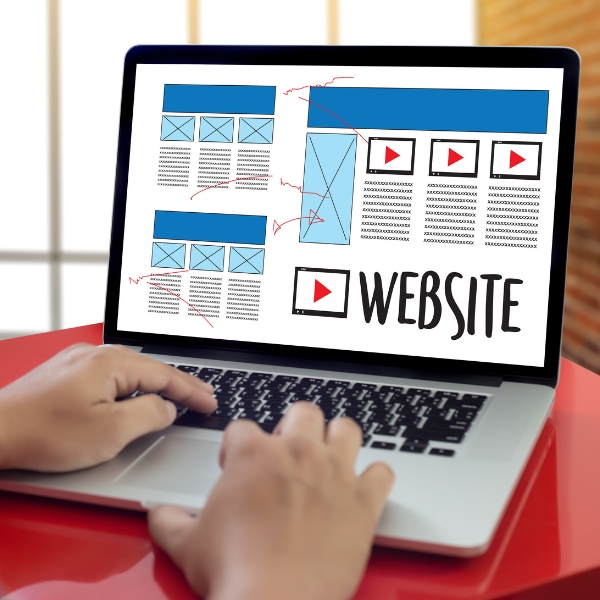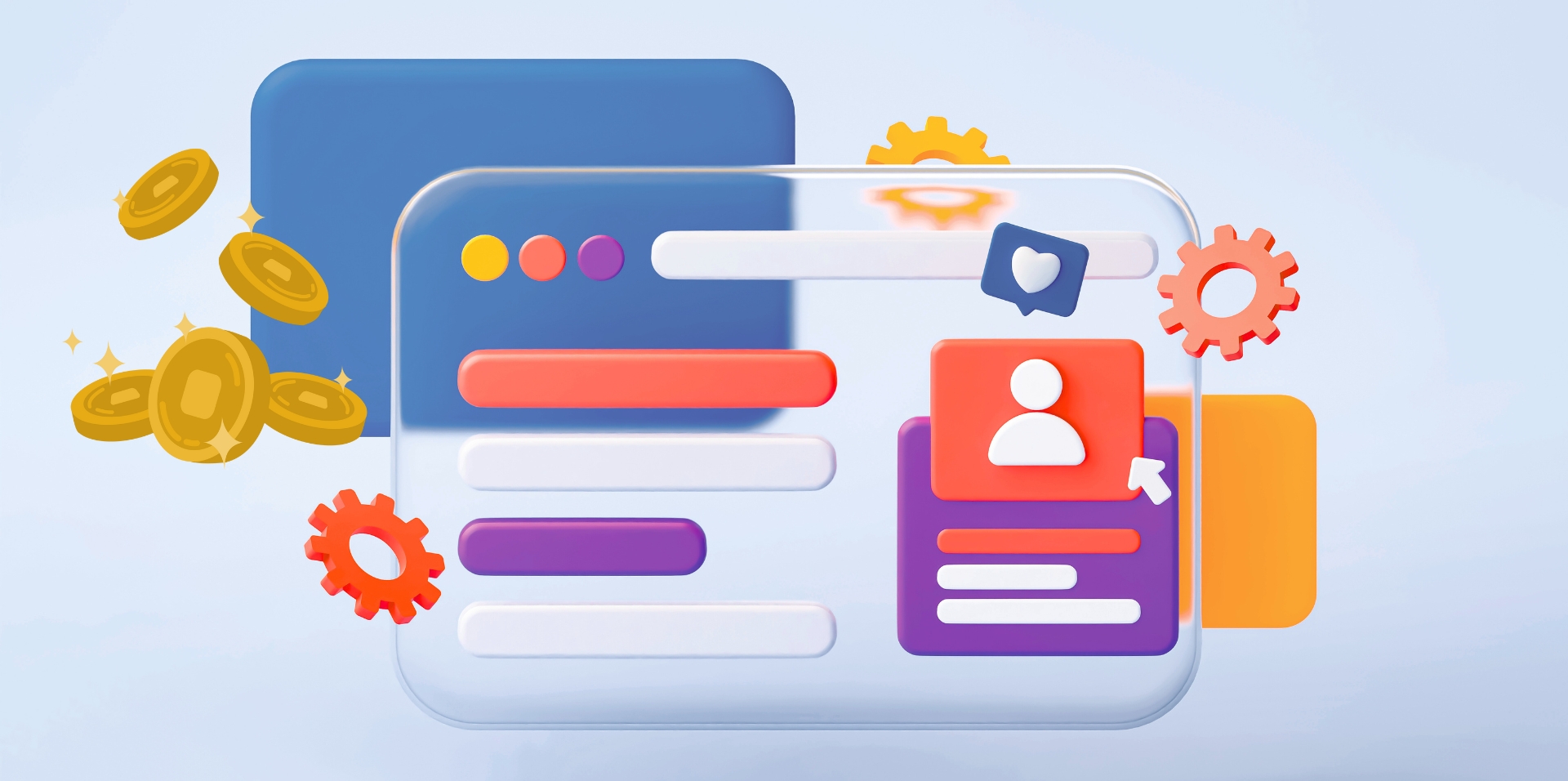Running PPC campaigns is one of the most effective ways to attract targeted traffic to your website, and a well-crafted PPC landing page can make the difference between a visitor who converts and one who leaves.
To turn paid traffic into customers, your landing pages need to closely align with your ad copy, reflect user intent, and make it easy for visitors to take action. When designed with clarity, consistency, and conversion in mind, a high-converting PPC landing page can increase ROI and drive measurable business growth.
At britweb, our professional PPC services can help your business thrive. Our expert team combines digital marketing insight with web development expertise to design and optimise PPC landing pages that convert.
If you’re ready to get more from your paid search campaigns, contact us today to see how we can help.
Why PPC landing pages matter in digital marketing
What is a PPC landing page?
A PPC landing page is a dedicated, standalone web page created specifically to convert visitors who arrive from your Google Ads, Bing Ads, or other paid search platforms. Unlike standard website pages, these pages are designed around a single, focused objective, whether that’s generating a lead, driving a purchase, or encouraging a form submission.
Why relevance drives conversions
In digital marketing, every click from a pay-per-click (PPC) campaign represents both an opportunity and an investment. Each visitor has cost you money to acquire, which means every interaction should be carefully guided toward conversion. Yet many businesses lose potential customers because their landing pages fail to deliver on the promise made in their ad copy.
When your landing page content doesn’t align with the ad’s message, visitors can quickly lose interest and click away. This not only wastes valuable ad spend but can also lower your Quality Score (Google’s measure of how relevant and useful your ads and landing pages are to users), increase your cost per click, and reduce overall campaign performance.
Boost PPC performance with strong landing pages
By following proven landing page best practices, you can build high-converting PPC landing pages that generate customers from targeted ads, improving both your return on investment and your wider digital marketing strategy.
To explore the broader context of digital marketing strategies and different techniques, read our digital marketing services overview.
Best practices for PPC landing pages
1. Define the purpose of the page
Before focusing on design or copy, it’s vital to understand what makes a PPC landing page different from other website pages. A dedicated landing page has one goal: to convert visitors from a PPC ad. Every element should guide users toward that action, without distractions.
The key principle here is “message match” – ensure your landing page content mirrors your ad copy. If someone clicks a Google Ad offering a “Free SEO Audit,” they should immediately see that same offer reflected on the page. This consistency builds trust, improves user intent satisfaction, and reinforces relevance.
2. Create compelling headlines
Your headline is the first thing visitors see, and it should immediately confirm they’ve come to the right place. A strong headline captures attention, reinforces the promise made in your ad copy, and motivates users to keep reading.
A good PPC landing page headline should:
- Mirror the wording of your PPC ad for consistency and relevance.
- Highlight a clear benefit or value proposition.
- Include relevant keywords from your ad campaign to support SEO.
Pair your headline with a short, benefit-focused subheadline to reinforce your message. This serves as a quick summary of why your landing page matters to your target audience. Think of it as your on-page elevator pitch that helps convert interest into action.
3. Align landing page content with user intent
The most effective PPC landing pages are built around what users expect to see after clicking an ad. If your ad copy promises a discount, free trial, or consultation, that exact offer should be immediately visible above the fold.
Your landing page content should then continue to stay tightly focused on user intent. Avoid mentioning unrelated products or services; instead, create one PPC landing page per campaign or audience segment. This focused approach not only improves relevance but also enables you to create multiple versions tailored to specific ad groups, keywords, or search intent, resulting in better overall performance across PPC platforms.
Where possible, use personalised messages, such as localised offers, dynamic text, or content blocks that speak directly to different target audiences. The more directly relevant your landing page feels to the visitor’s search, the more likely they are to engage and convert.
4. Design for conversion – layout, flow, and CTAs
A high-converting PPC landing page combines persuasive copy with thoughtful design. Every element on the page should make it easy for visitors to take action.
Key elements of an effective PPC landing page:
- Clear call to action (CTA): Use action-focused language such as “Get Started” or “Claim Your Free Quote.” Place CTAs prominently above the fold and repeat them naturally throughout the page to maintain momentum. Focus the page on one clear conversion goal and avoid multiple competing actions – you can include several CTA buttons, but they should all drive the same outcome.
- Minimal distractions: Remove unnecessary navigation and limit outbound links to keep visitors focused on the goal.
- Visual hierarchy: Use contrast, spacing, and consistent branding to draw attention to key content and CTAs.
- Build credibility: Use real customer feedback, project results, or success stories to reassure visitors and strengthen confidence in your offer.
- Trust signals: Add verification elements like security badges, partner logos, or recognised payment icons to reinforce reliability.
An effective PPC landing page feels clean, intuitive, and fast. It should load quickly and perform seamlessly across mobile devices. With much of paid traffic coming from mobile users, responsive design isn’t optional; it’s essential for maintaining engagement and maximising conversions.
Finally, don’t overlook the power of visual storytelling. Authentic, brand-aligned imagery and design elements help bring your message to life. At the same time, short videos, infographics, or animations can simplify complex offers and encourage users to stay on the page longer.
5. Keep consistent branding
When someone clicks your paid advertisement, they should experience a seamless transition from ad to landing page. Consistent branding across your logo, colour palette, imagery, and tone of voice will build trust, reinforce recognition, and encourage user interaction.
If your PPC ad looks professional but the landing page feels outdated or visually disconnected, that trust can disappear instantly. Treat your PPC landing page as a natural extension of your brand identity, not a separate asset. The more cohesive your visual and verbal branding, the more credible and reassuring your page will feel, helping convert visitors into customers.
In addition, ensure your landing pages display cookie consent and data protection notices to keep you compliant and strengthen user confidence in how their information is handled.
6. Test, measure, and improve your PPC landing pages
Even the best PPC landing pages benefit from ongoing refinement. Regular testing helps you understand what truly resonates with your target audience and ensures your page continues to perform as user behaviour evolves.
Use A/B testing to compare different headlines, CTA buttons, layouts, or imagery. Combine this with Google Analytics and conversion tracking to accurately measure engagement and identify areas for improvement.
Key metrics to monitor
- Conversion rate: The percentage of visitors who complete your desired action.
- Bounce rate: The number of users who leave without interacting with the page.
- Dwell time: How long visitors stay before leaving – a good indicator of engagement.
- Form abandonment rate: The percentage of users who start filling out a form but don’t finish.
By continually testing and analysing these insights, you can create high-converting landing pages that evolve with your campaigns, driving consistent performance and long-term PPC success.
You can also take advantage of AI-powered optimisation tools that automatically adjust landing page elements based on real-time user behaviour. Platforms like Google Ads Smart Bidding and AI-driven CRO software can identify which versions convert best, helping you improve performance faster and with greater precision.
7. Avoid common PPC landing page mistakes
Many businesses lose valuable PPC ad spend by repeating simple yet costly mistakes. Paying attention to these common pitfalls can make a big difference to your landing page conversion rate and overall campaign performance.
Mistakes to avoid:
- Too many CTAs: Focus on one clear goal per page to keep visitors’ attention and guide them toward action.
- Slow load times: Even a one-second delay can cause users to lose interest and abandon the page.
- Unclear messaging: Keep your copy concise, benefit-driven, and consistent with your ad’s message.
- No mobile optimisation: A mobile-first design is essential to ensure accessibility and a smooth experience across all devices.
- Generic imagery: Use authentic, brand-aligned visuals that connect with your target audience and reinforce trust.
Addressing these issues not only improves user experience but also strengthens your PPC campaign performance, helping you convert more visitors and make the most of your ad budget.

Why you should create dedicated landing pages
It can be tempting to send PPC traffic to your homepage. While a homepage serves as a general introduction to your brand, it’s not designed in the same way as PPC landing pages, with a specific search intent or conversion goal in mind. In contrast, dedicated landing pages deliver a focused, relevant experience that drives better results.
| Homepage | Dedicated Landing Page |
|---|---|
| Provides a broad overview of your business and services. | Focuses on one specific offer or campaign objective. |
| Serves multiple audiences and purposes. | Targets a single audience or ad group. |
| Contains multiple navigation options and links. | Minimises distractions to keep users focused on the CTA. |
| Not directly aligned with the ad copy or user intent. | Mirrors the PPC ad message and precisely matches search intent. |
| Typically achieves lower conversion rates. | Delivers higher conversion rates and improved Quality Scores. |
A well-planned PPC landing strategy will involve creating multiple dedicated landing pages, each built for a specific search ad or target audience. When every page reflects the exact needs and expectations of your visitors, you should convert more paid traffic into loyal customers.
Summary
A successful PPC landing page is far more than just a web page; it’s a carefully designed conversion tool that connects targeted ads with user intent. The best-performing pages align seamlessly with your PPC ads, deliver a consistent experience, and make it easy for visitors to take action.
By applying these PPC landing page best practices – from clear messaging and strong CTAs to consistent branding and ongoing testing – you can improve conversion rates, strengthen your Quality Score, and get more value from your paid advertising.
When every click delivers a focused, relevant, and engaging experience, your landing pages stop being just part of your PPC campaign, they become the driving force behind it.
Contact britweb about PPC for your business
Looking to boost your PPC performance and create landing pages that truly convert? At britweb, we combine digital marketing, Google Ads management, and web development expertise to deliver measurable results.
Get in touch today to see how we can turn your paid advertising into sustainable business growth.
PPC landing page FAQs
What makes a good PPC landing page?
A strong PPC landing page aligns closely with your ad’s message, giving visitors exactly what they expect. It loads quickly, looks great on all devices, and features one clear call to action (CTA) that drives conversions. Clean design, relevant visuals, and social proof, such as testimonials, help build trust. The best pages are simple, relevant, and focused on one goal.
Should every PPC ad have its own landing page?
Yes, each PPC ad should ideally link to a dedicated landing page that matches its intent and message. This improves message match, enhances user experience, and boosts Quality Score. Tailored pages also allow for more effective A/B testing and better campaign optimisation over time.
How do I measure the success of a PPC landing page?
Track results using metrics such as conversion rate, bounce rate, and time on page. Tools like Google Analytics reveal how visitors interact and where improvements are needed. Regular testing of headlines, CTAs, and layouts helps refine performance and reduce cost per acquisition over time.


